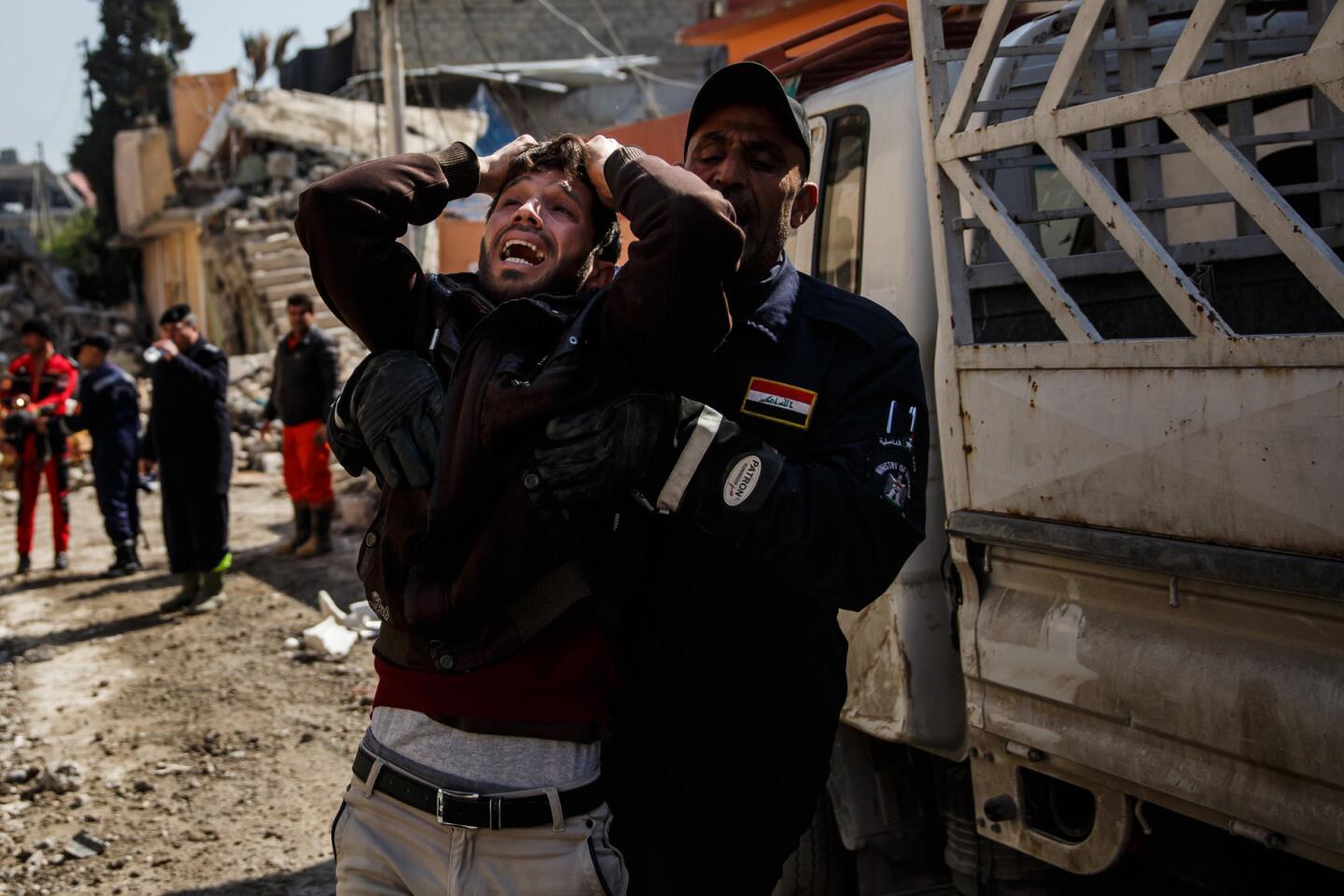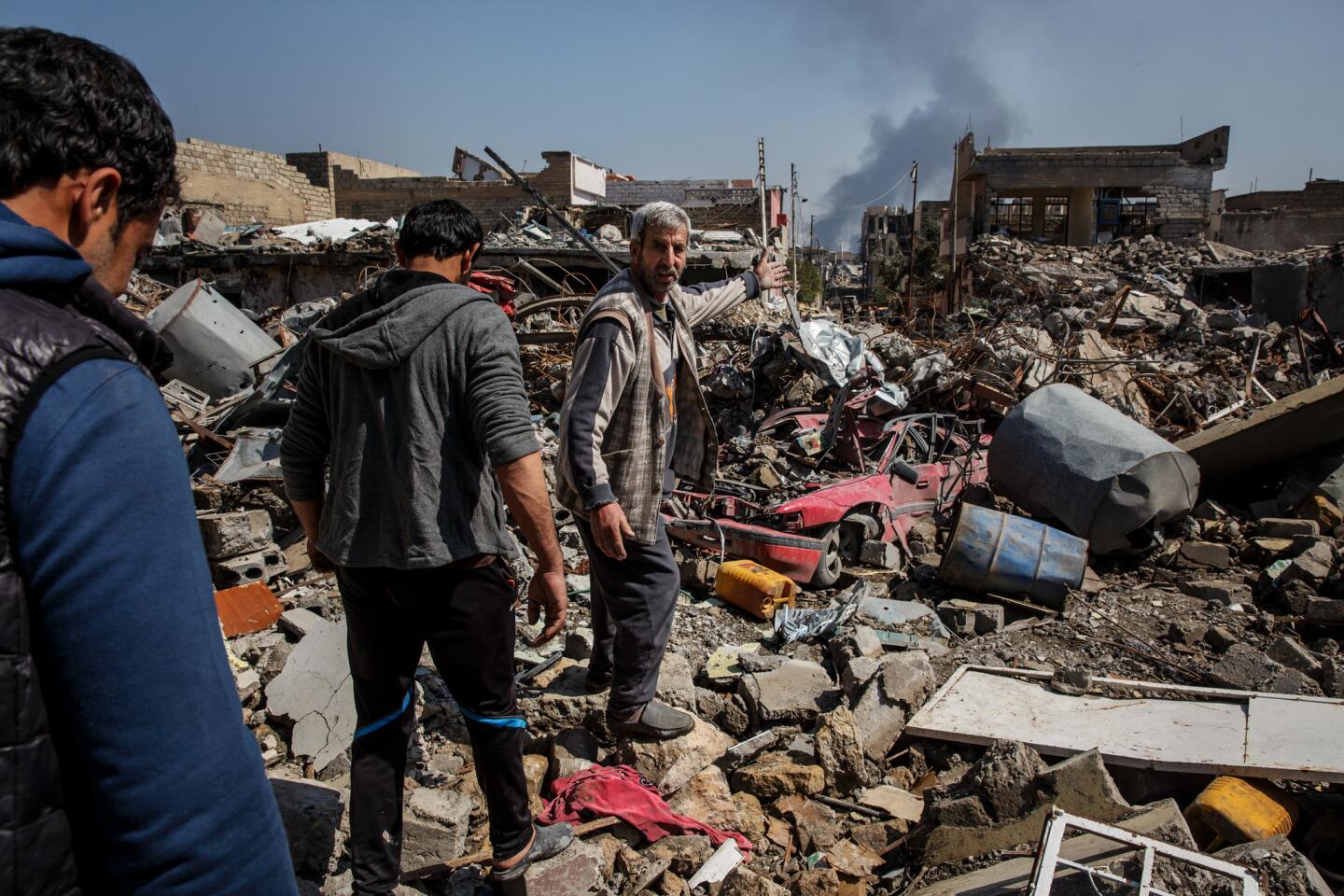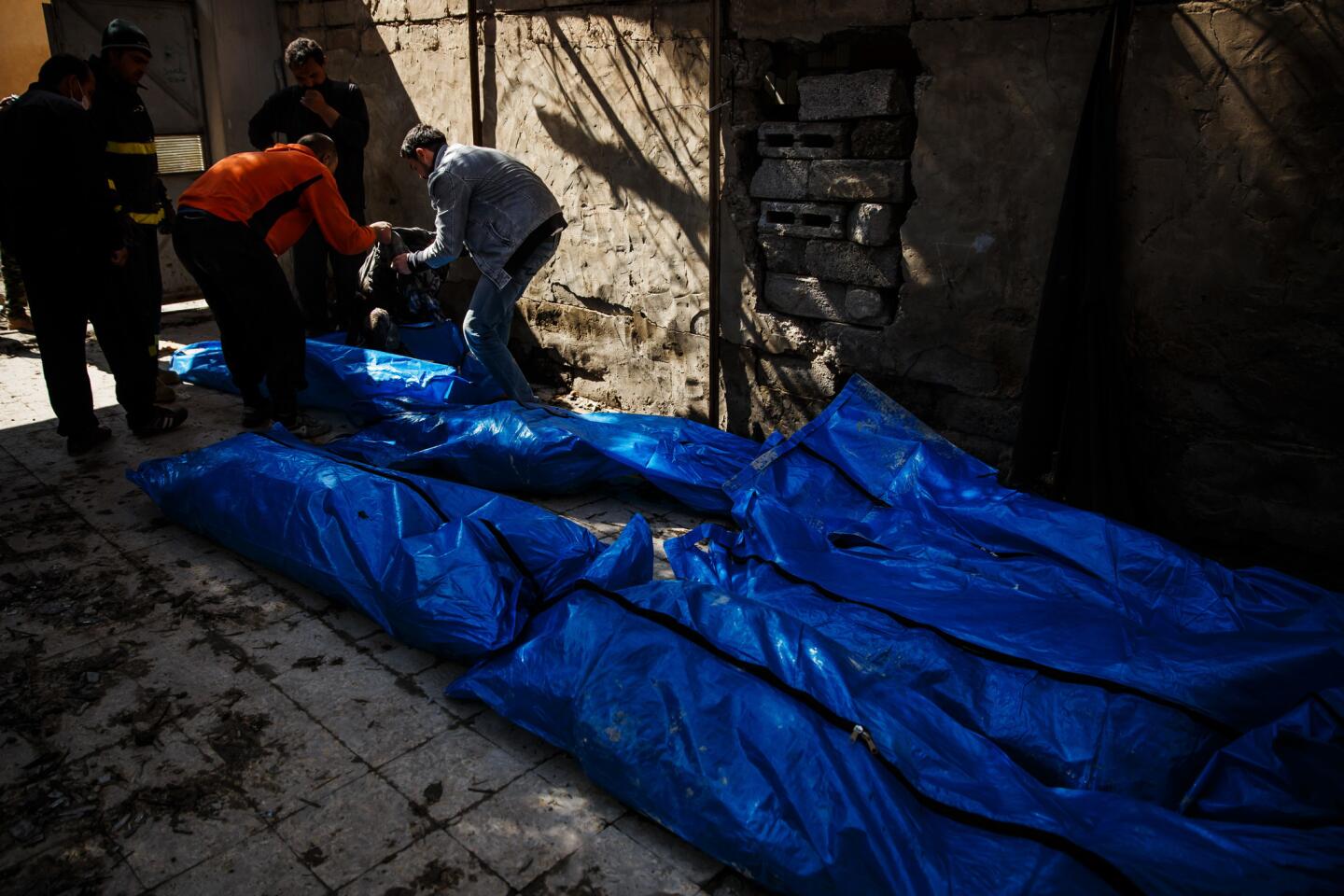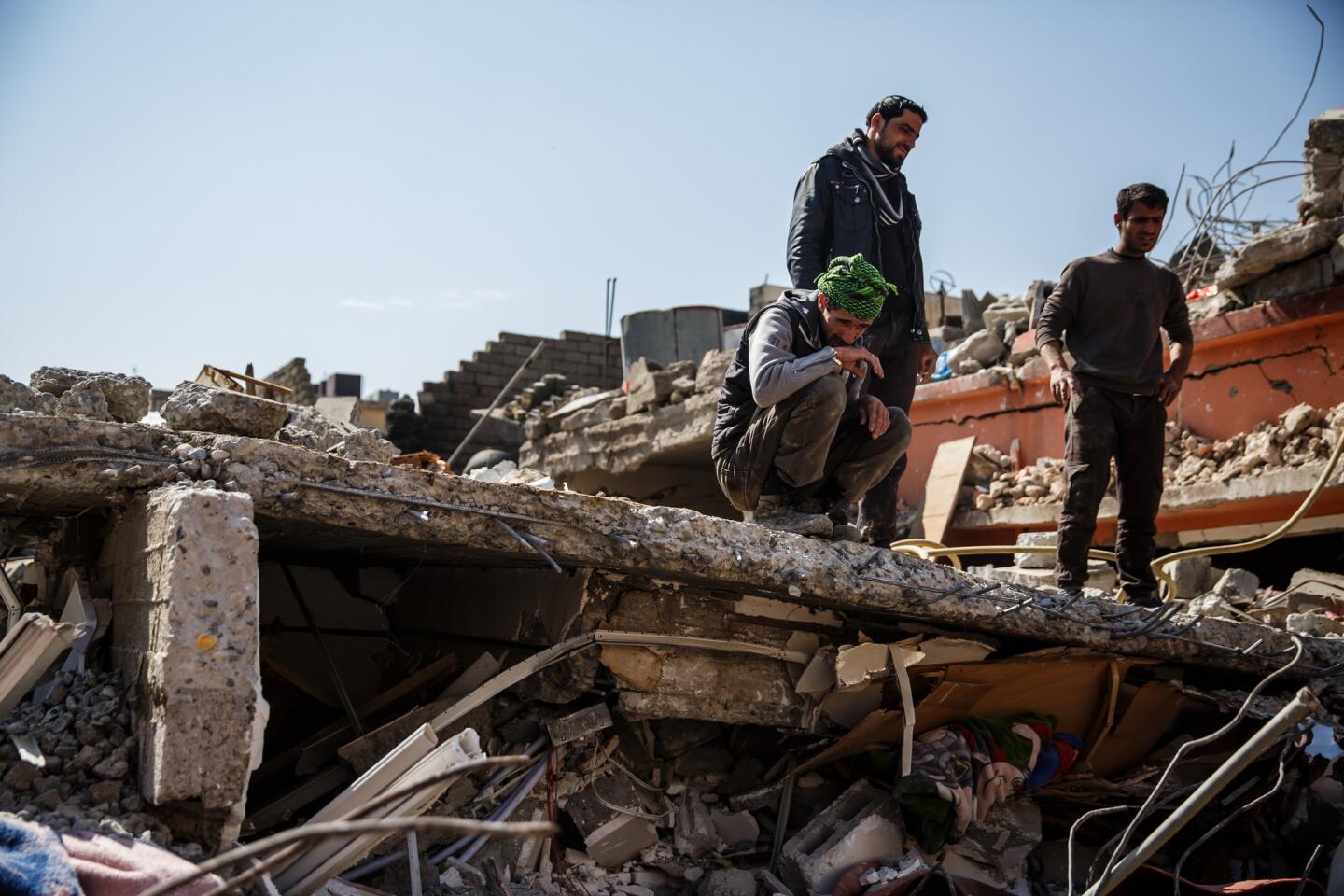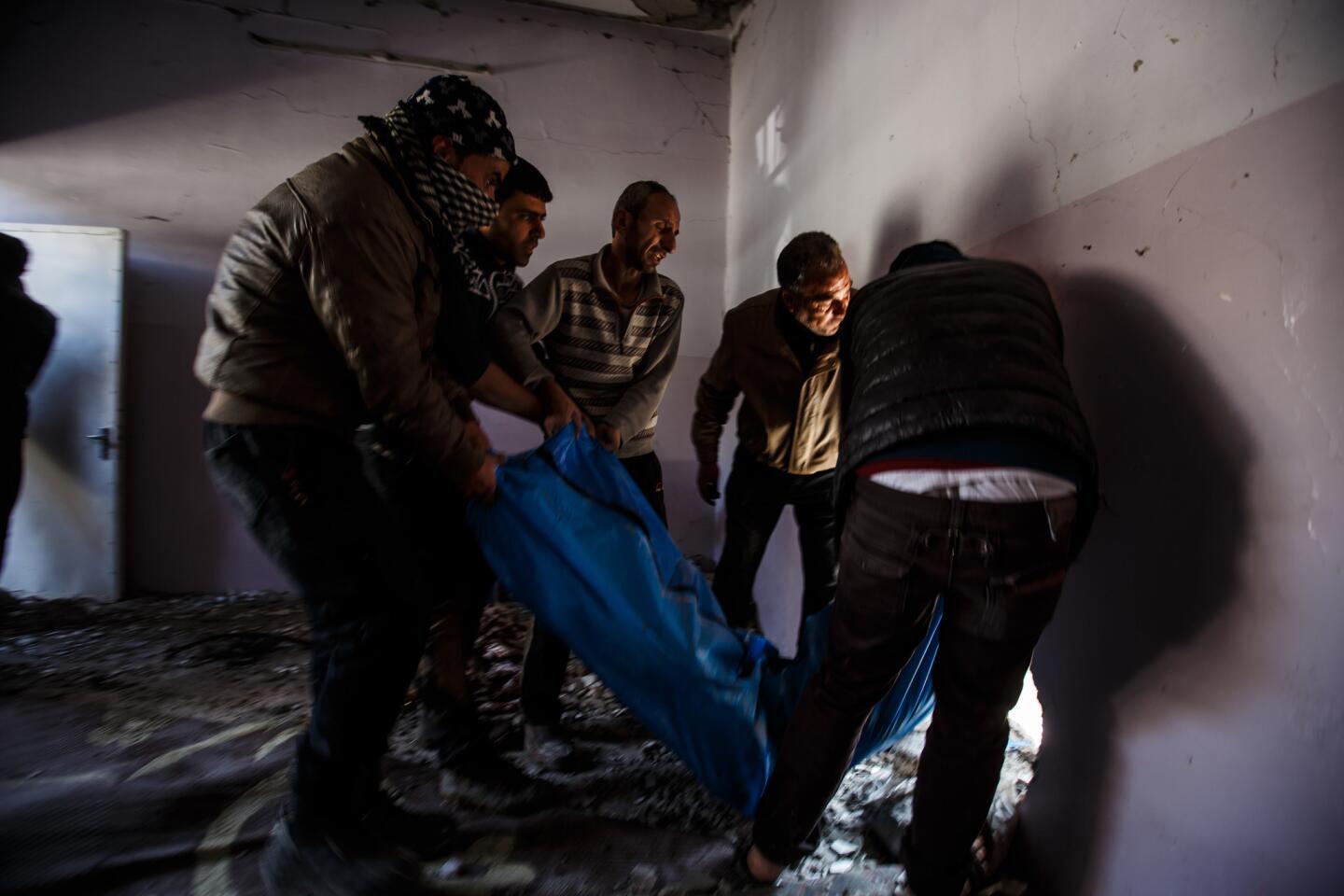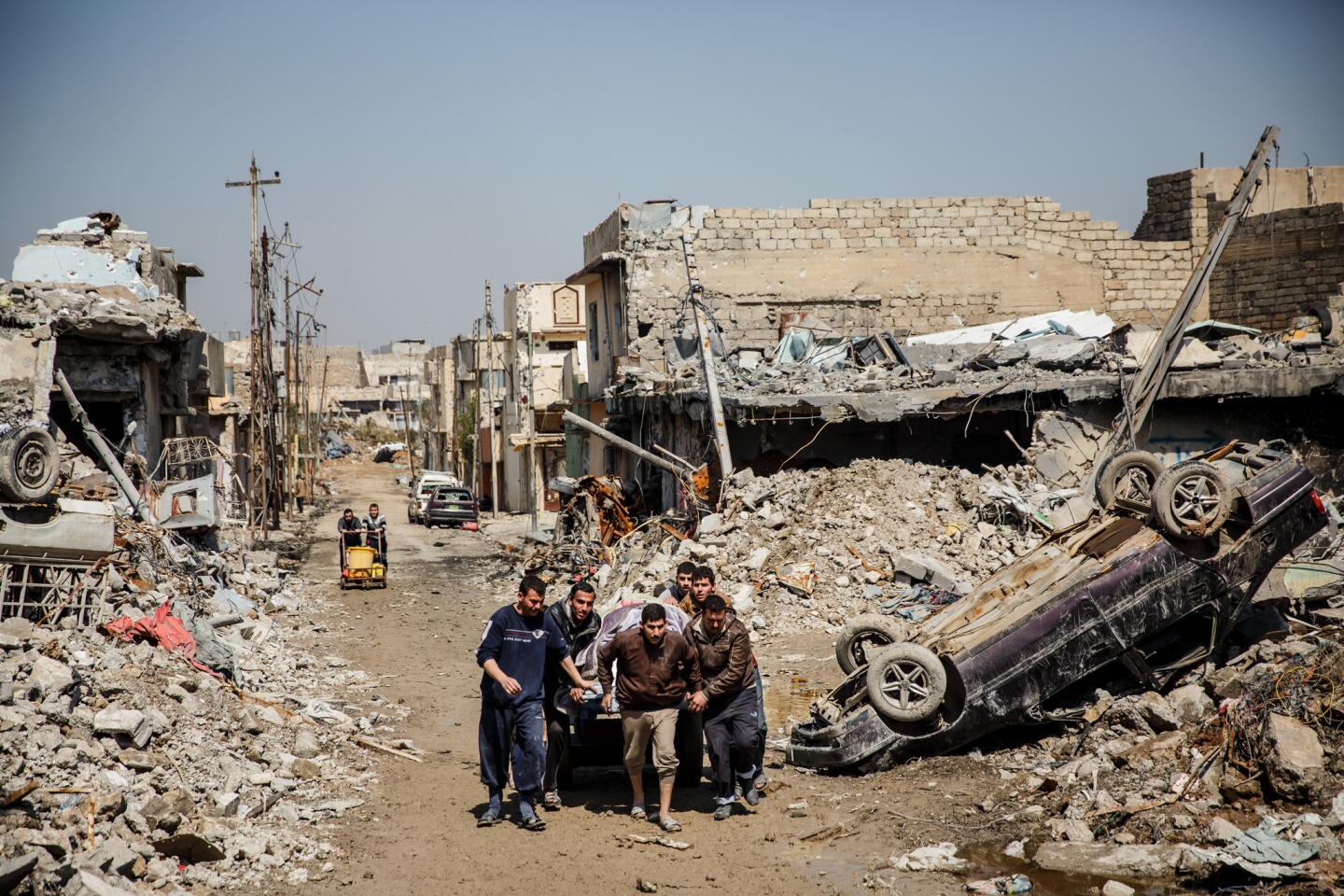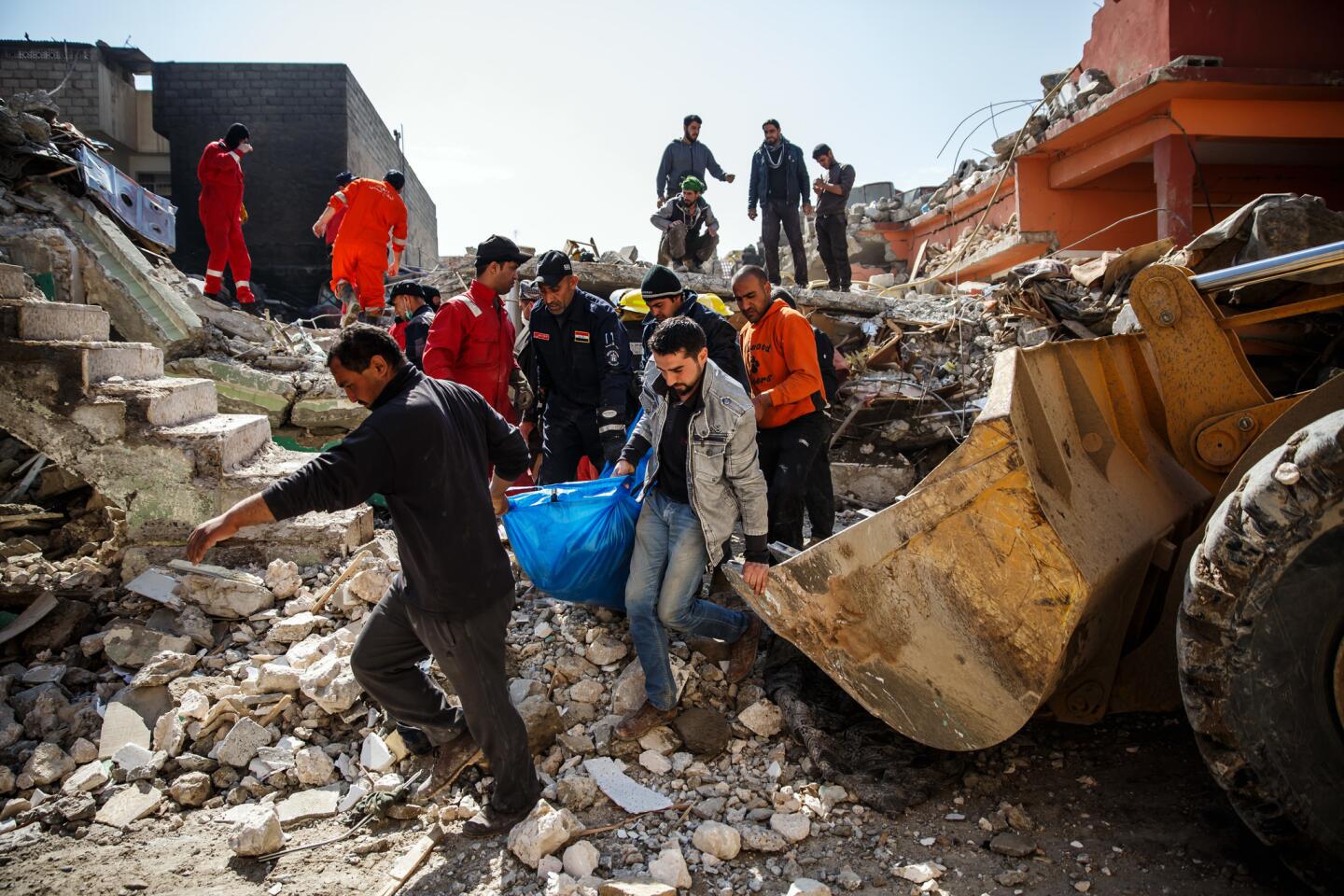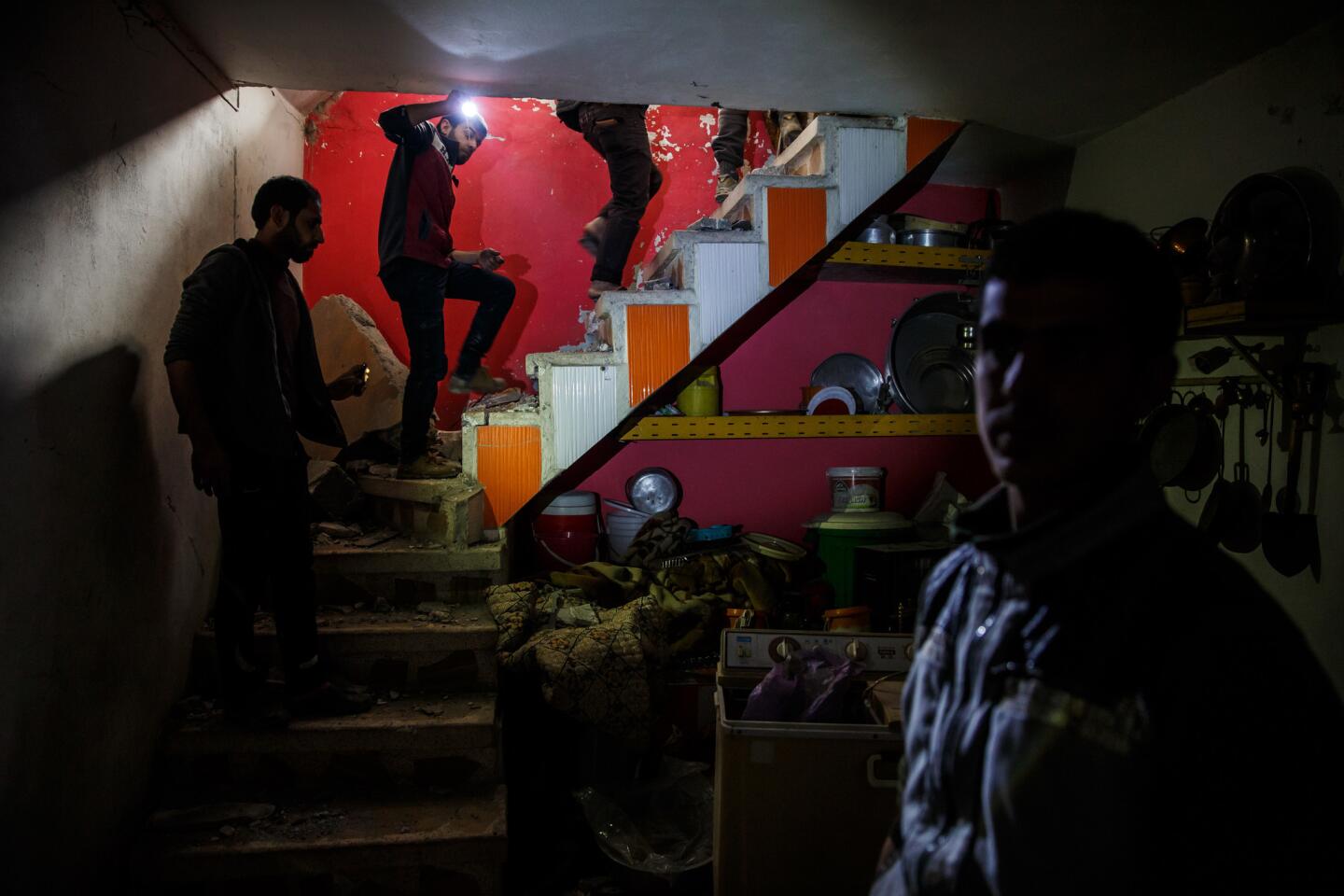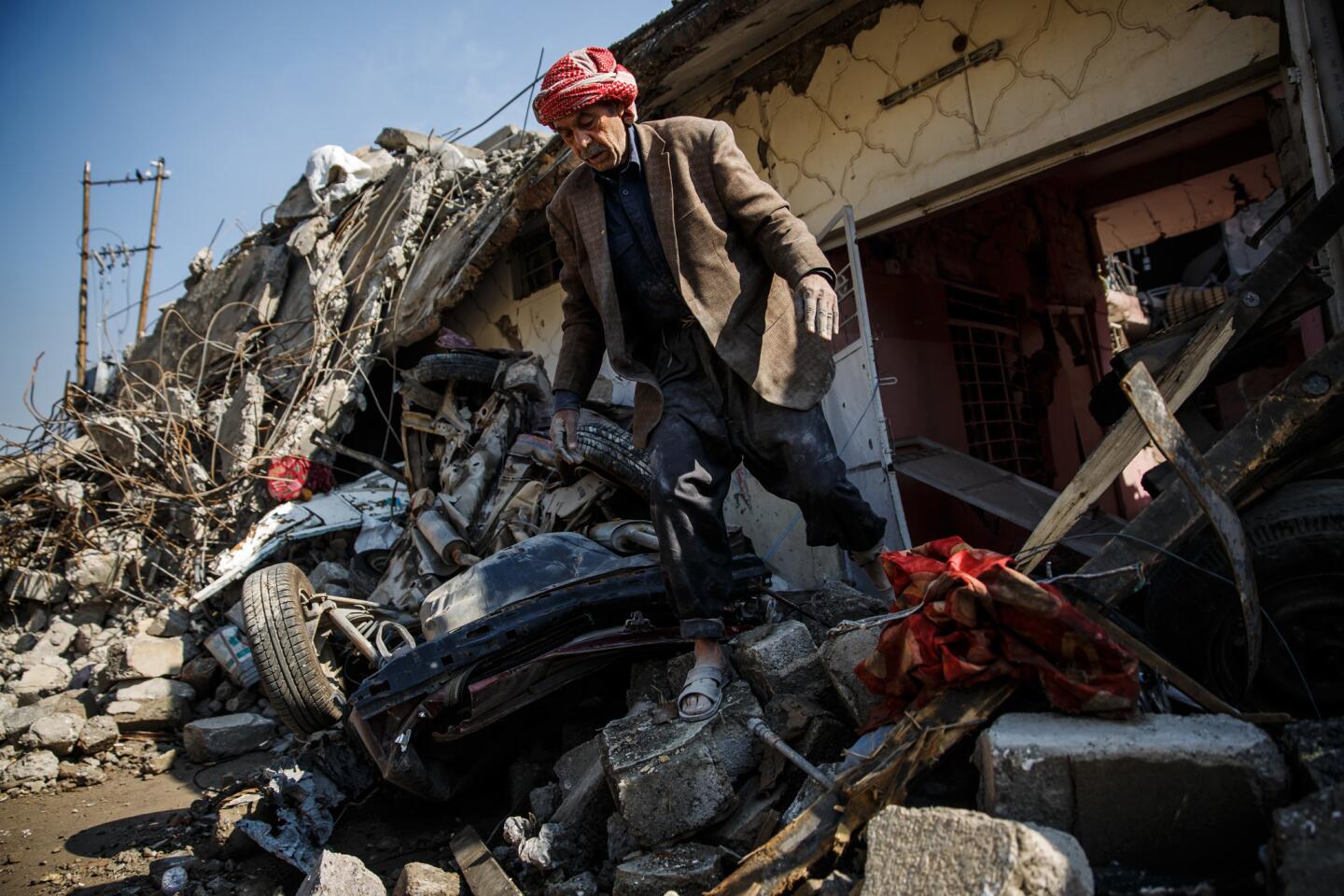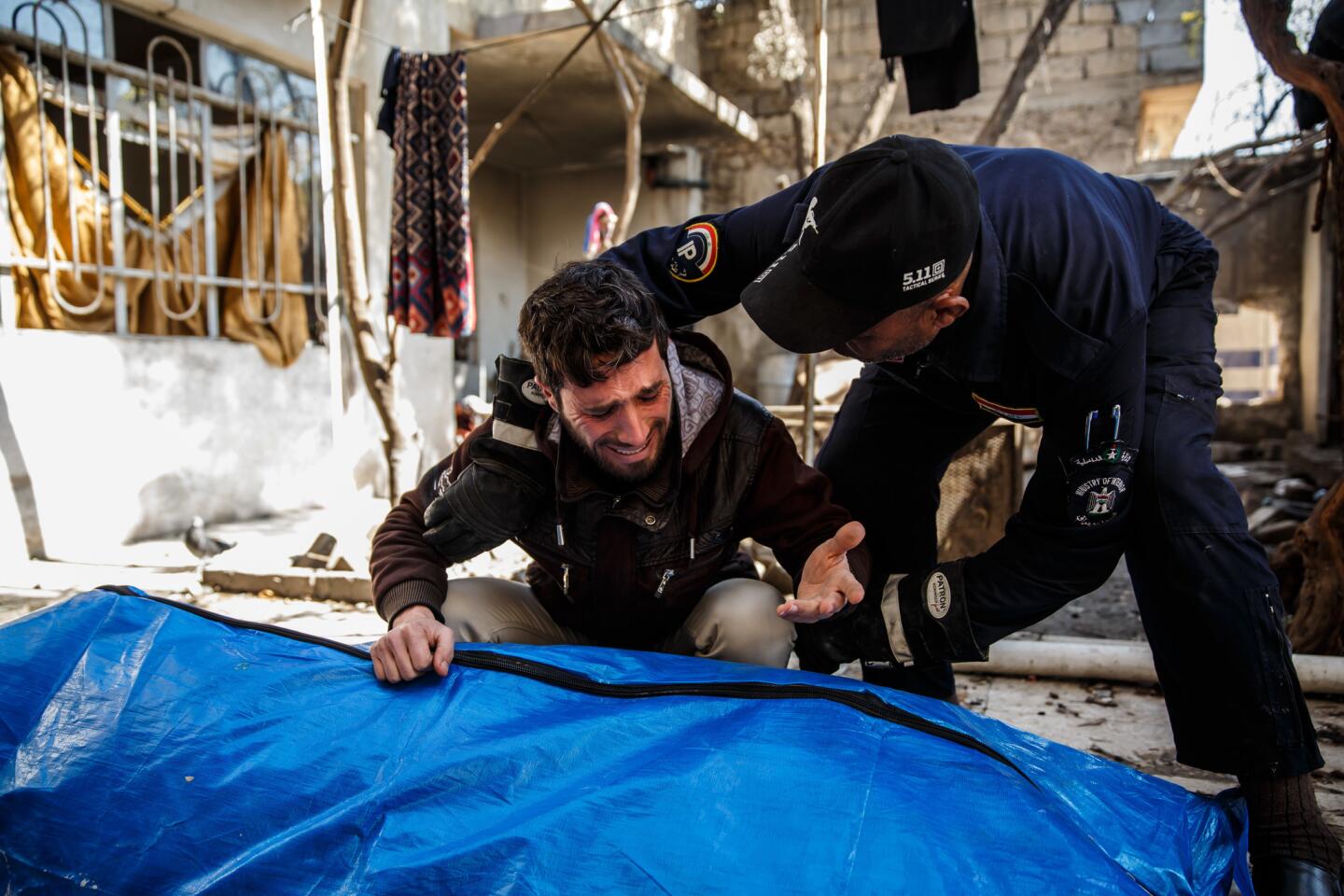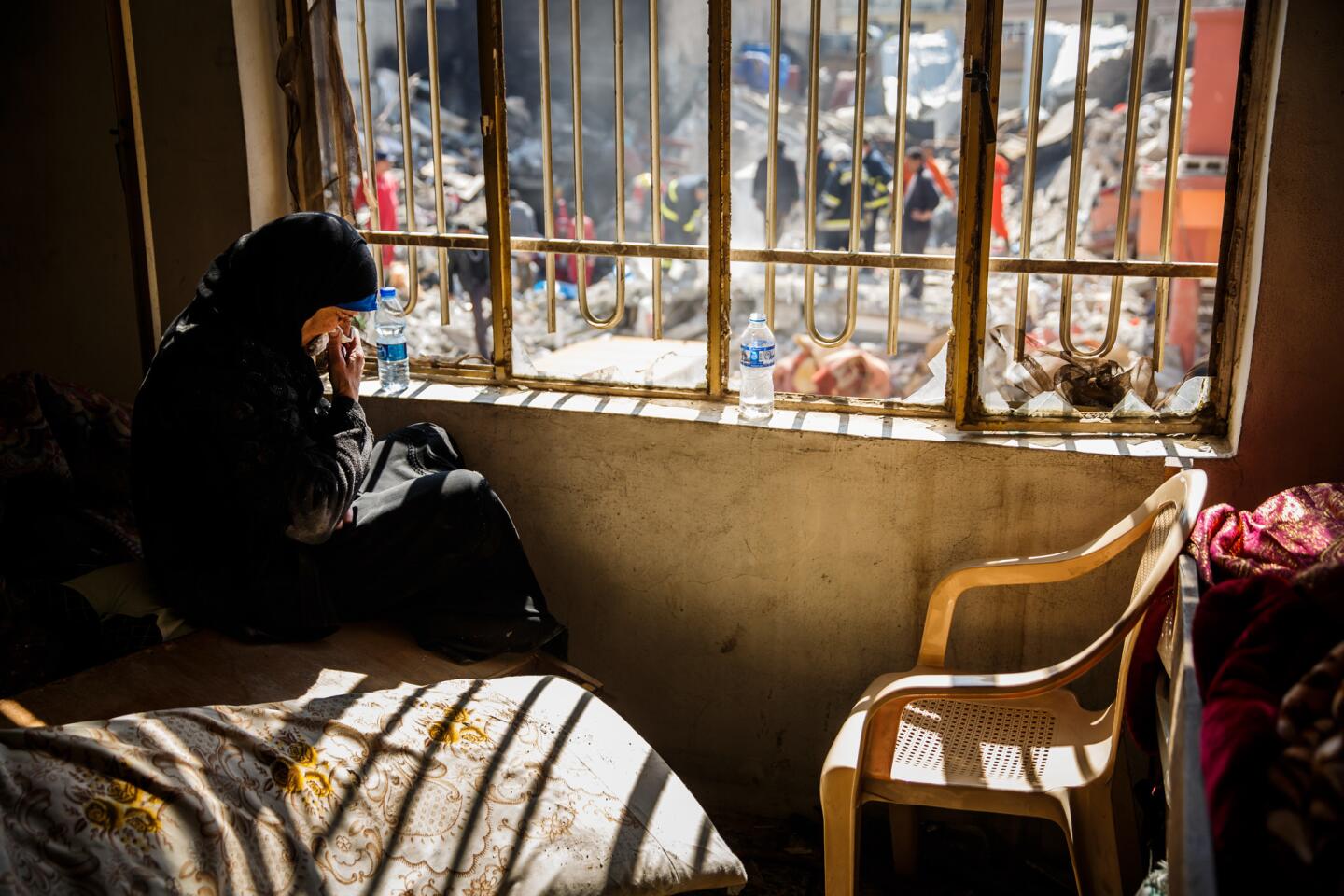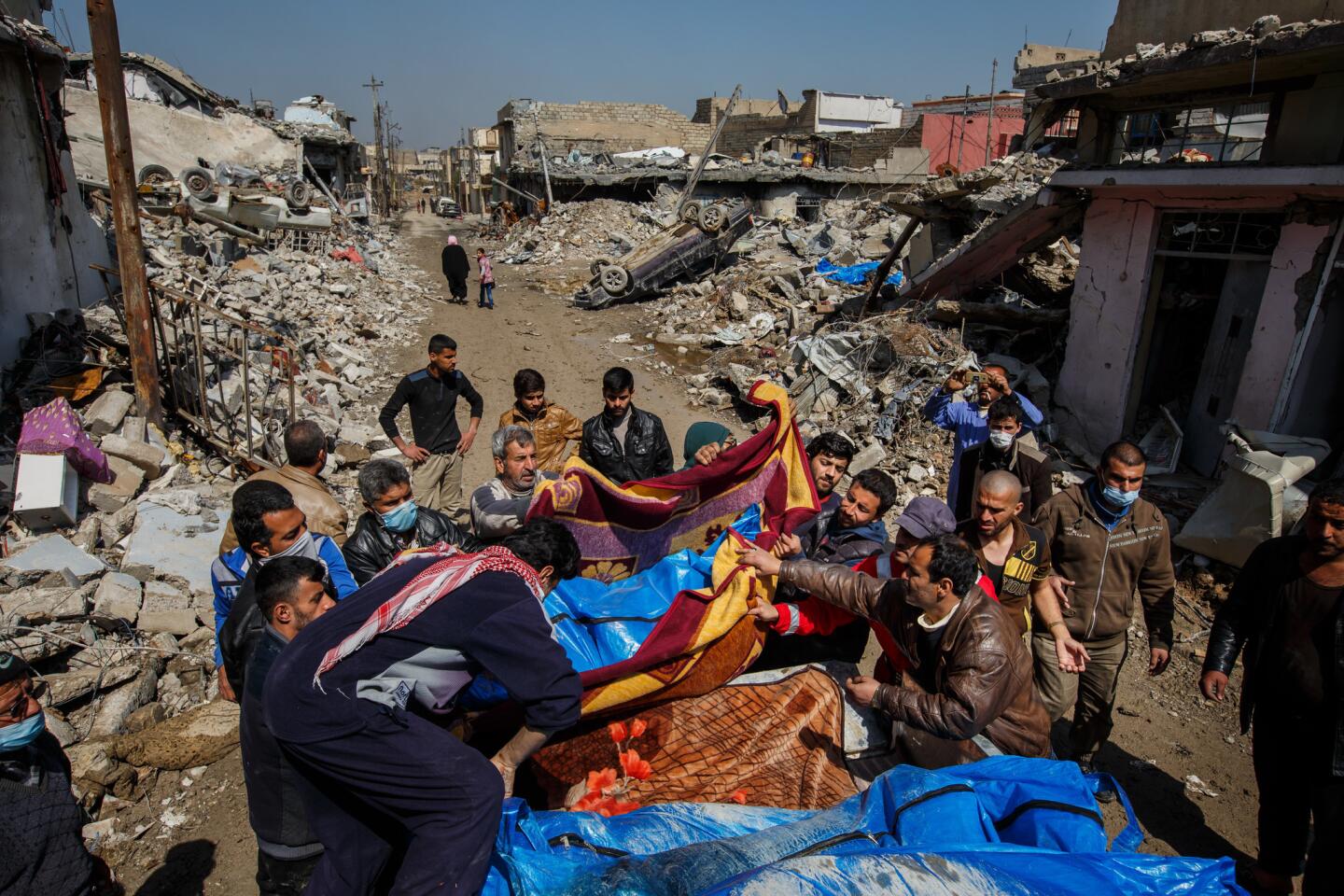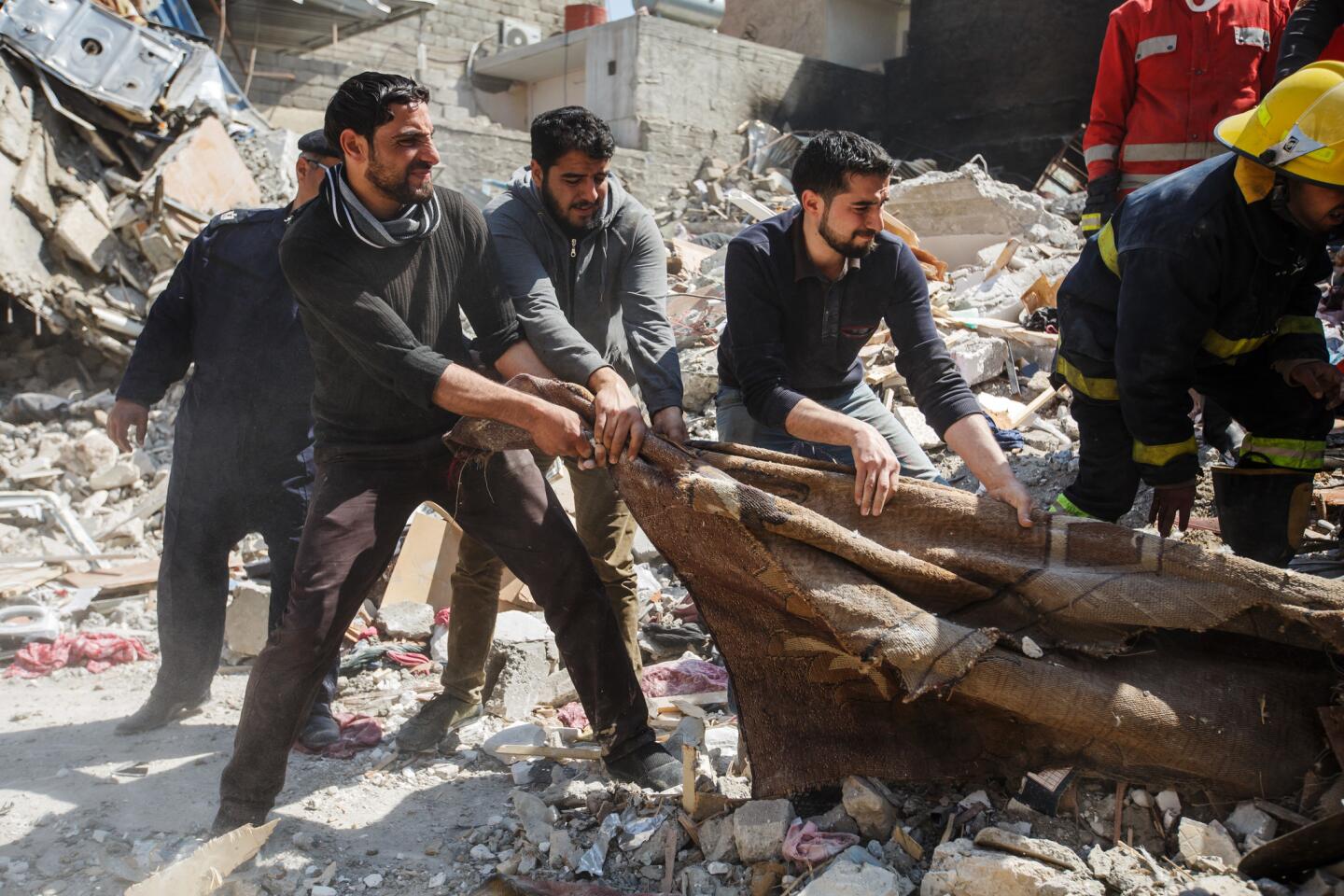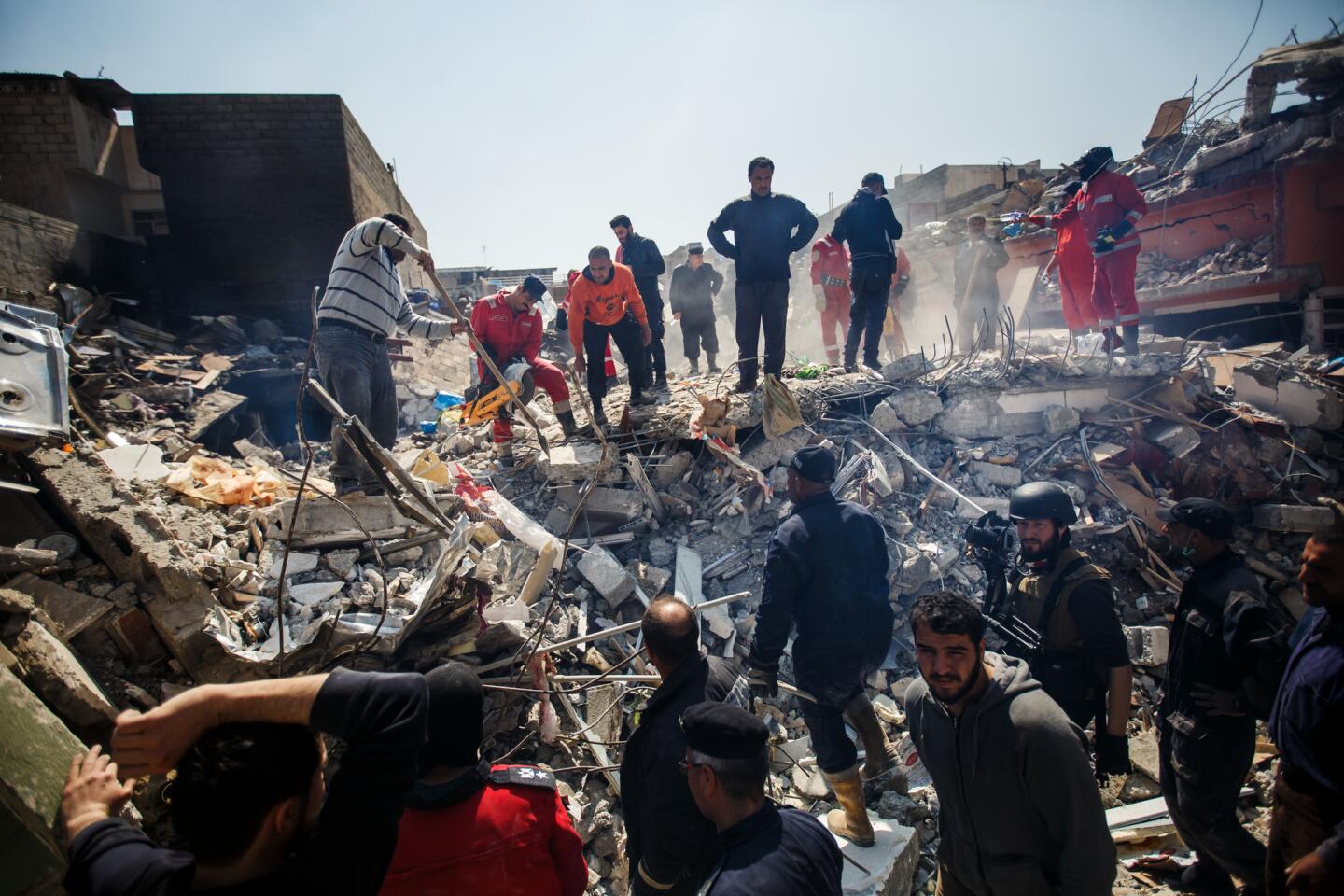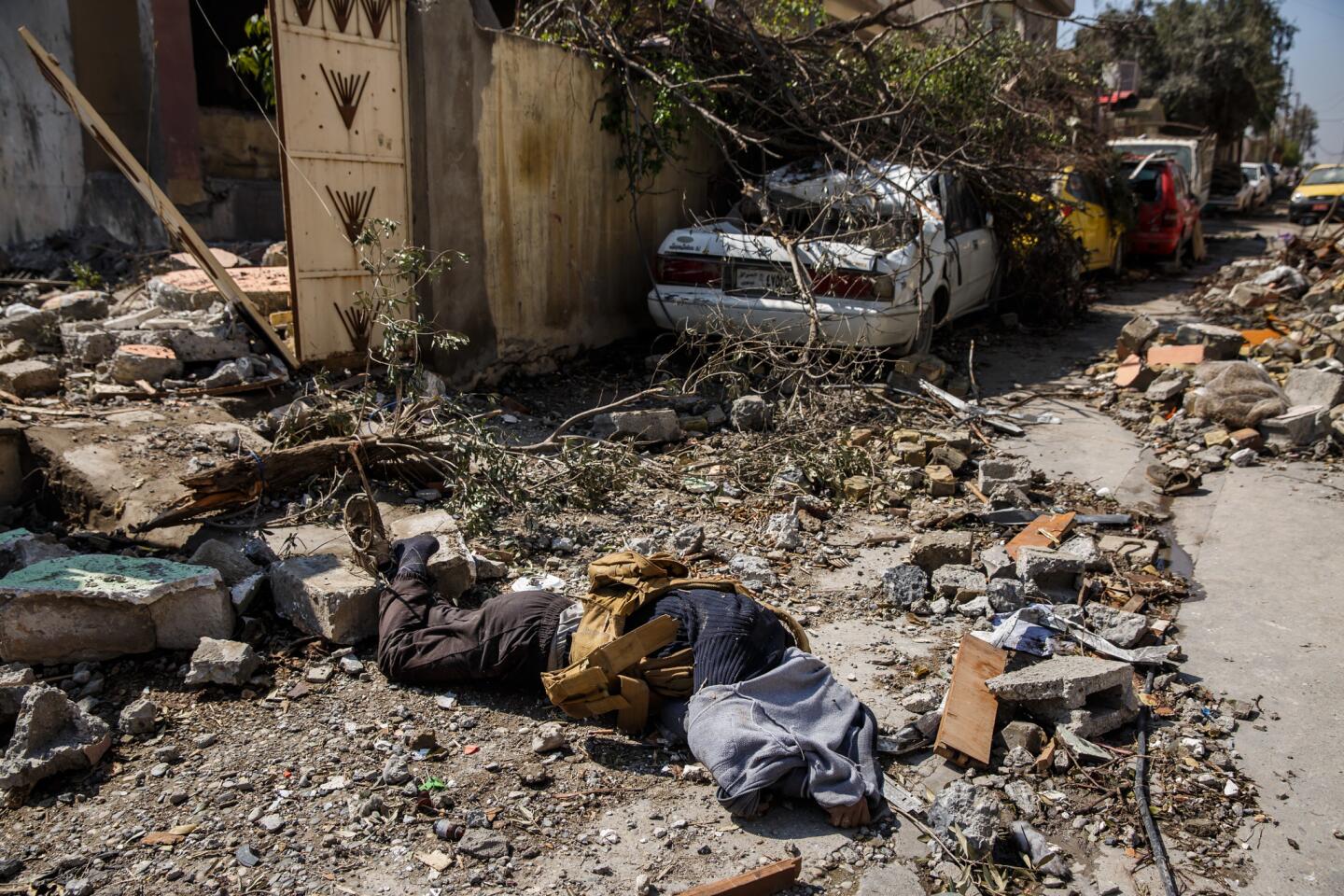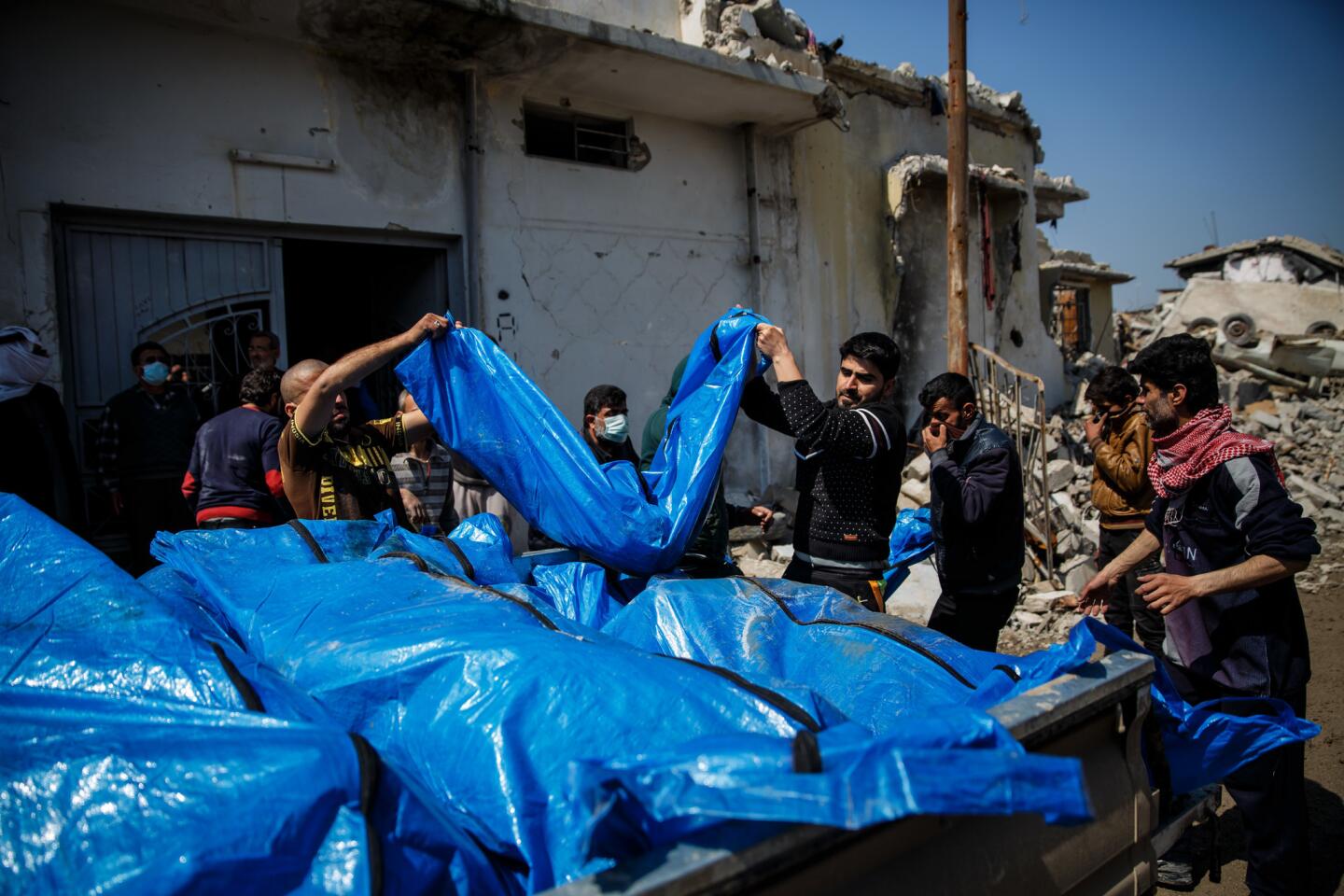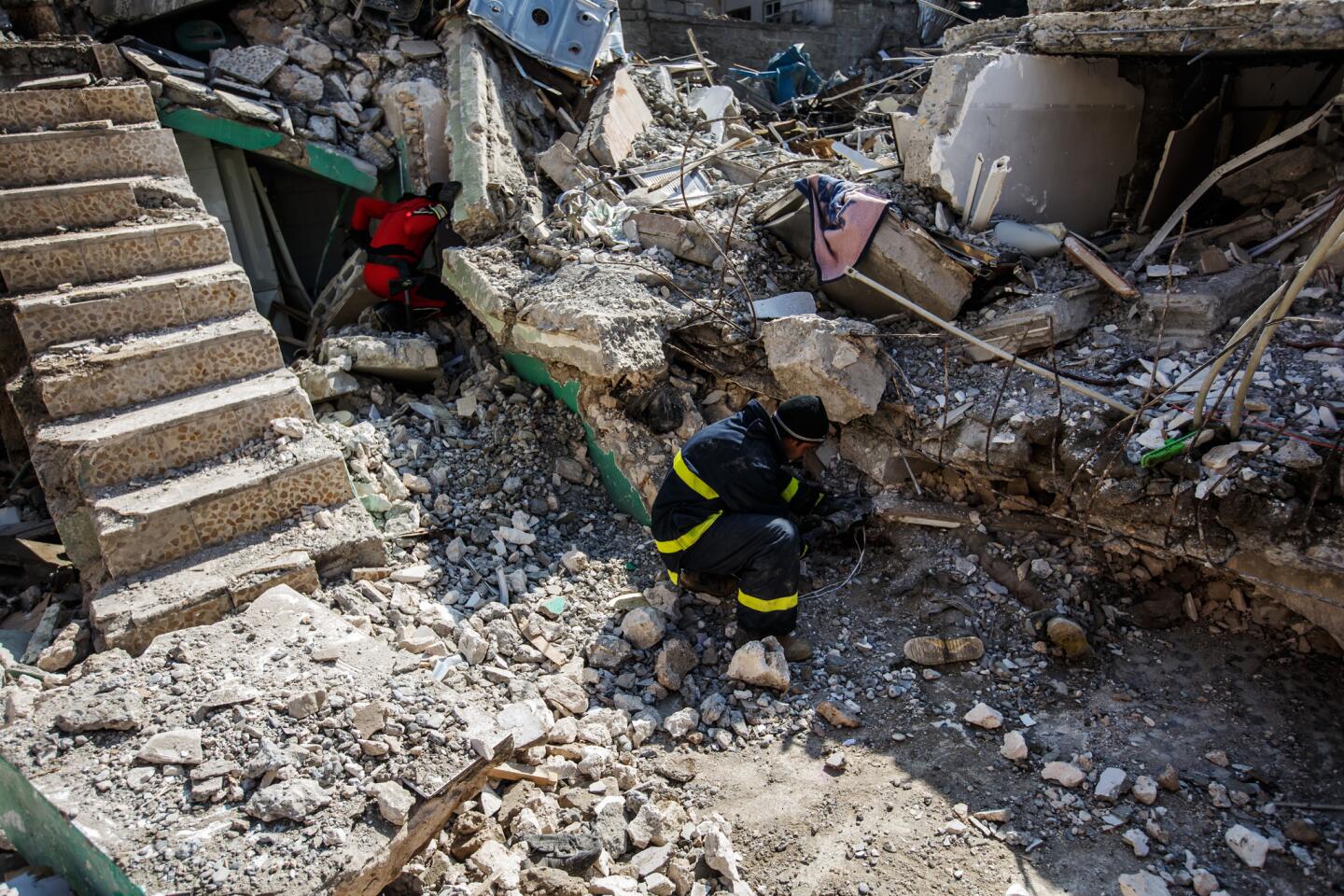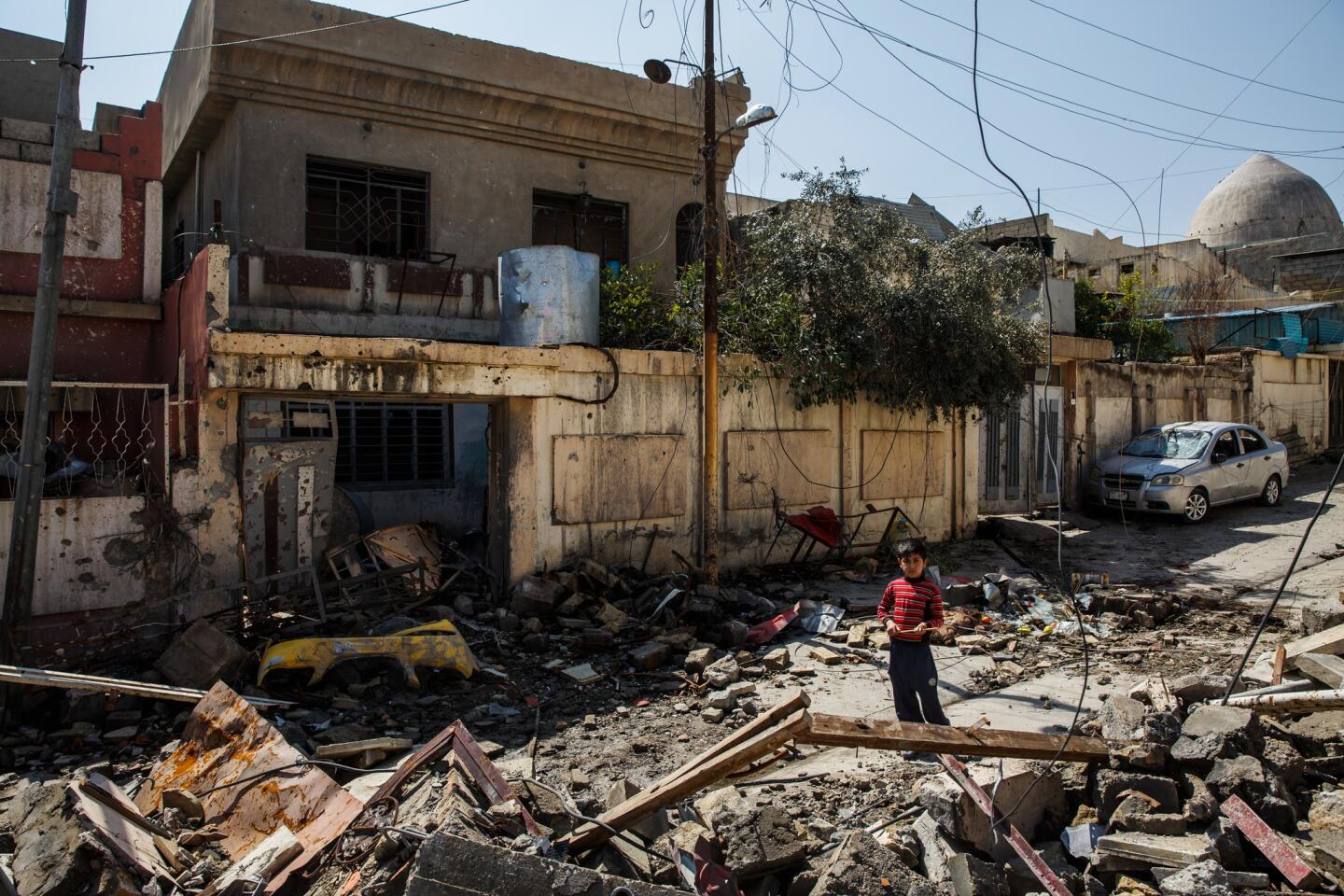Is Islamic State luring U.S. coalition forces into killing civilians in airstrikes?

The source of a deadly Mosul attack remains under investigation, but witnesses said it was an airstrike by the U.S.-led military coalition trying to drive Islamic State militants out of the city.
Reporting from Baghdad — The Islamic State militants arrived at Khalida Abd Jamal’s house through holes they cut in the concrete walls. Holding a gun to her husband’s head, they corralled the family of seven into a room on the first floor.
“We were stuck in the room,” she recalled. “We had to stay. We couldn’t leave.”
Through a window, she could see a sniper positioned on top of another house in her west Mosul neighborhood of Jadidah.
Moments later, a massive explosion leveled her entire block, killing scores of civilians. The source of the attack remains under investigation, but witnesses said it was an airstrike by the U.S.-led military coalition trying to drive the militants out of the city.
Jamal and her immediate family survived. The account she gave supports the assertion by some officials that the terrorist group is using a new tactic to turn the population in Mosul against the coalition: Herding civilians into houses, then stationing snipers on the rooftops to provoke airstrikes.
“It’s like a trap,” said Basma Baseem, head of Mosul’s local council, describing what she called a “new technique” that causes a large civilian death toll and turns the snipers into martyrs.
By some estimates, more than 200 people were killed in Jadidah.
Baseem visited the site of the attack on Friday and spoke with witnesses who described a lone sniper on a roof. After she accused the coalition of a massacre, she said, Iraqi security forces barred her from west Mosul.
The Pentagon said that an airstrike had been conducted in the area that day, but the Iraqi military said over the weekend that evidence at the scene suggested that Islamic State had laced a house with explosives and used a car bomb.
The U.S. military said Monday that analysts were viewing hundreds of hours of video captured over a 10-day period, reviewing each bomb dropped above west Mosul to find out what happened.
“We are looking at getting ground truth, it’s our highest priority,” said Col. John Thomas, spokesman for U.S. Central Command, which is based in Tampa, Fla., and oversees military operations in the Middle East.
Whatever the source of the attack, experts said it is clear that drawing attention to civilian deaths has been an important part of the Islamic State’s campaign to sell its ideology and hang on in Iraq and Syria.
The group uses photos of dead women and children in the propaganda it posts each day on social media, at times including video of cities leveled by airstrikes.
A post Monday on the encrypted app Telegram attempted to justify last week’s terrorist attack in London with the unsubstantiated allegation that the U.S. had recently killed more than 80 people in recent attacks on a mosque and a school in Syria.
Islamic State seized Mosul in 2014 but has lost much of it since October, when the Iraqi army and international coalition launched an offensive to take it back.
At the urging of Iraqi officials, many civilians initially remained in their homes when the offensive started. Islamic State militants used them as cover, sheltering in homes, cutting holes between houses or digging tunnels under them to avoid airstrikes.
The group has been circulating a message on the encrypted app Telegram that 1,800 civilians have been killed in the city. The actual number remains unclear.
Amnesty International released a report Tuesday putting the number of people killed in airstrikes on Mosul in the “hundreds,” dating back to the beginning of the offensive. An increase in recent months raises “serious questions about the lawfulness of these attacks,” the report said.
“If one side uses human shields, that does not remove the obligation for the other side to protect civilians,” said Donatella Rovera, Amnesty’s Iraq researcher. If militants station a sniper on the roof, she said, “You don’t necessarily need to take down the whole house.”
The Pentagon said that since the air war against Islamic State began in mid-2014, the U.S. and its allies have carried out more than 18,900 airstrikes in Iraq and Syria, and that there has been a sharp uptick in recent months, with 3,440 munitions dropped in February.
It said that at least 220 civilians have been killed. The London-based monitoring group Airwars put the figure at about 2,700.
At the Pentagon on Monday, Defense Secretary James N. Mattis defended the U.S. actions, saying, “There is no military force in the world that has proven more sensitive to civilian casualties.
“We go out of our way to always do everything humanly possible to reduce the loss of life or injury among innocent people,” he said. “The same cannot be said for our adversaries and that is up to you to sort out.”
Meanwhile in Jadidah on Monday, families were still recovering bodies from the rubble.
Ahmad Bashar said he lost his mother, sister and 21 other family members. “We found some of them,” he said by phone. “Some of them were hard to identify because their faces were destroyed.”
Jamal and her family, who are staying with neighbors, buried her husband’s uncle in the garden and helped bury at least 30 more victims on the grounds of a nearby mosque. Several relatives were still missing.
“There are still more dead people not found yet, in the basements, under the wreckage,” she said.
Times staff writers Hennessy-Fiske reported from Baghdad and Hennigan from Washington.
ALSO
Iraqi military denies that an airstrike caused massive civilian casualties in Mosul
U.S. acknowledges airstrike in Mosul, where more than 200 Iraqi civilians died
More than 200 civilians killed in suspected U.S. airstrike in Iraq
More to Read
Sign up for Essential California
The most important California stories and recommendations in your inbox every morning.
You may occasionally receive promotional content from the Los Angeles Times.
